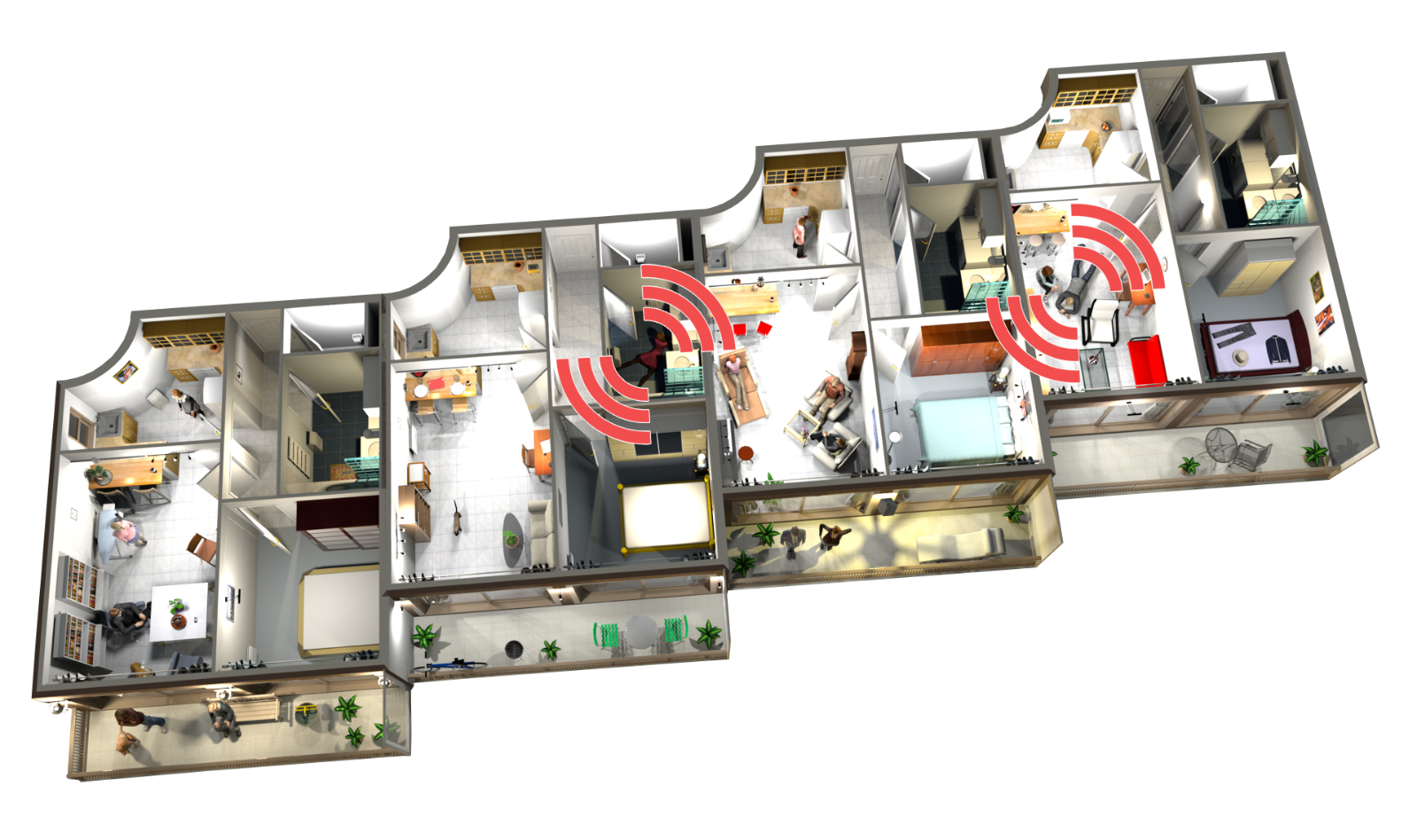CLAS for assisted living

In the short to medium term, CLAS is also intended for use by persons in need of assistance in assisted living, in senior residences or in single private homes, for emergency call alerting.
In contrast to care facilities, care for this group of persons is usually provided by outpatient care services and, in the private environment, often also by caring relatives.
Outside of a care facility, this group of persons has a free choice of provider for an outpatient care service. The same applies to the emergency call to any home emergency call provider.
In order to be able to connect this group of people to CLAS, the CLAS server software was designed in such a way that it can also work centrally like a home emergency call centre. The activation and alerting is then carried out from any location via an internet data connection.
This requires an operator of this centre. CoSi electronics would like to offer the CLAS solution to outpatient care services as an alternative to the classic home emergency call providers. It is also possible to connect external persons to a CLAS solution in a care facility in the vicinity.
In this way, the respective provider of outpatient care enables its customers to connect directly to its own emergency call centre. In this way, the provider optimises its care and also benefits from regular additional income for the connection of its customers.
Residents benefit from possible reduced connection fees and from faster, optimally coordinated processing of emergencies.
When using CLAS in a private environment, it is alternatively possible to use a mini-computer for the CLAS software in the home of the person in need of assistance.
In the simplest case, an emergency call is triggered in the home via an emergency hand-held transmitter, e.g. the FuFi-smart-ISM. An SR-ISM WLAN installed there forwards its alarm directly to the external CLAS server via the flat's Internet router.
The alarmed caregivers immediately receive all the necessary data on the alarming person and the type of alarm. If desired, the nursing staff can contact the person in need of assistance by telephone before a personal visit to clarify the cause of the emergency call.
Alternatively, the hand-held transmitter can also send an alarm directly to a stationary CoSi SIP telephone. In this variant, a hands-free connection to the alarmed carer is automatically established in addition to the emergency call alarm.
If the person in need of help is not at home or is in the garden, for example, outside the reception range of the radio receivers in the flat, the triggered emergency call can instead be transmitted to the CLAS server via smartphone, using the CLAS alarm app. With the alarm, a hands-free connection to the alarmed caregiver is also established here.
An alarm via smartphone is also possible redundantly, if a connection to the CLAS server via the other two devices was not successful.
A CLAS solution for residents in assisted living and in the private residential environment consists of the following modules:
- Central CoSi Linux server with CLAS server software in the cloud, at an outpatient care service or care facility with the CLAS emergency call solution.
- Or alternatively mini-computer with CLAS software in the home
- At least one SR-ISM WLAN in the flat
- Or optionally a CoSi SIP emergency telephone instead
- One mobile emergency hand-held transmitter for each resident, e.g. the FuFi-smart-ISM
- Optional radio-based manual release devices, such as the FuFi-bath-ISM or the FuFi-pull-ISM
- Optional radio-based fire detectors such as the FuFi-smoke-ISM or the FuFi-thermal-ISM
- Optional automatic detectors such as the Fufi-motion-ISM or the FuFi-motion-ISM-S
- The optional connection of contact inputs via a FuFi-wire-ISM or a FuFi-MConact-ISM
CLAS supports several possibilities for forwarding alarms to the responsible nursing staff. CoSi electronics recommends the use of Android caregiver smartphones for this purpose. CLAS then alerts the CLAS nurse app installed there. Alternatively, Android tablets can also be used.
In addition to the use of the graphical alerting interface, close-range identification of the mobile emergency call transmitter and thus also of the person in need of help is also possible via the Android devices. The CLAS app then automatically reports to the CLAS server which caregiver is currently caring for which person in need of help, at which location.
As an alternative to using the CLAS caregiver app, it is also possible to forward the alarms to external systems. Via these, mobile DECT telephones, for example, can be used to receive alarms.


